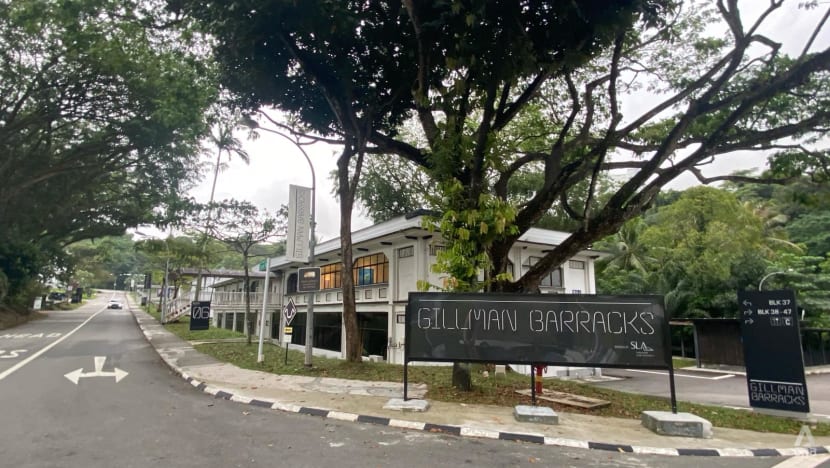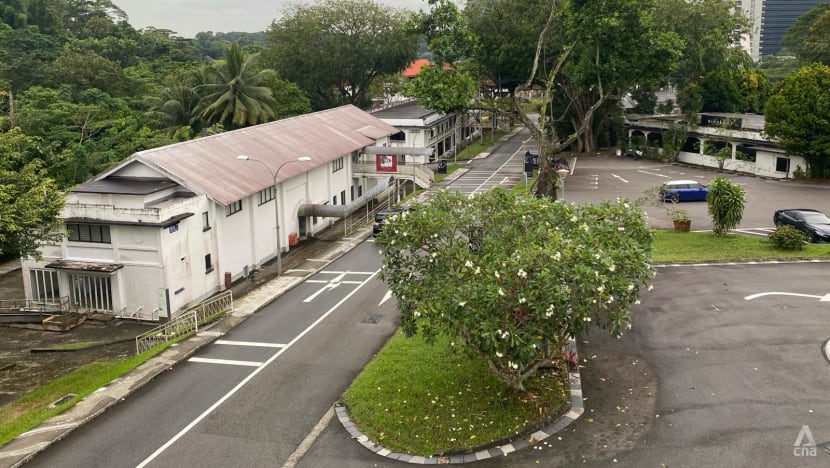Gillman Barracks tenants hope art can be part of future development plans for area
The government is studying the possibility of introducing a mix of private and public housing at the former colonial military compound which is now an arts and lifestyle enclave.

Singapore's government is studying the possibility of introducing a new residential neighbourhood at Gillman Barracks, which is currently an arts and lifestyle enclave. (Photo: CNA/Tang See Kit)

This audio is generated by an AI tool.
SINGAPORE: Tenants at Gillman Barracks hope that art can be part of development plans for the area.
This comes as the government studies the possibility of introducing a mix of private and public housing at the former colonial military compound which is now an arts and lifestyle enclave.
The area, located off Alexandra Road, is home to more than 20 restaurants, cafes and art galleries.
Environmental and heritage studies will start in the second quarter of 2024, and are estimated to be completed around the first half of 2026, National Development Minister Desmond Lee said in parliament on Mar 5.
Findings from these studies will allow authorities to “plan sensitively” for the site’s development, he added.
CAREFUL PLANNING REQUIRED
The enclave has allowed artists to reach more people, and encouraged the community to support local artists, said observers.
“The spaces at Gillman Barracks are very conducive because they have high ceilings,” said Ms Audrey Yeo, president of Art Galleries Association Singapore.
“These used to be former military barracks, so they are of all shapes and sizes. But ultimately, they are good spaces for exhibitions. The rent is affordable, which allows artists and galleries to put on more experimental projects, and that is very helpful for the development of artists' practices.”
Ms Yeo said it is “very hard to find spaces like these” in land scarce Singapore.
Among those who have benefitted from having a space carved out for his work is local artist Fyerool Darma, who used everyday items such as hazard tape to depict Singapore as an ever-changing landscape.

Experts said if the area is developed into a residential neighbourhood, demand will likely be robust given its central location and a lack of new housing options there.
They added that any new public housing to be built at the Gillman Barracks site would likely fall under the Prime or Plus categories in a new classification scheme for Build-to-Order (BTO) projects.
Prime and Plus category flats are typically new ones in central or choice locations, and come with stricter sale conditions.
PRESERVING CULTURE, HERITAGE
The government has been working to preserve the culture and heritage of different estates, said observers.
“On the one hand, we have a lot of future developments. On the other hand, we want to keep as many of these buildings that are meaningful to Singaporeans as possible,” Dr Woo Jun Jie, senior lecturer at the National University of Singapore’s Lee Kuan Yew School of Public Policy.
“So the trade off, sometimes, is that we may have to give up some of these existing spaces for new users. In other instances, we may have to peel back some of our emerging needs (and) design a space so that we can retain the old buildings, even if that may not be the most efficient use of space.”
For Gillman Barracks there may at least be efforts to preserve the black and white colonial-era buildings, said Dr Woo. For instance, these may be used as preschools or for community activities.
“At the broad town-planning level, I think we try to infuse some of the unique characteristics (and) the original characteristics of the neighborhood into urban design,” he said.
“A good example will be the neighborhood of Bidadari, you can see that they have retained some of the old trees, the old parks. They have also retained some of the natural environment in the motifs on the buildings along the sides of the HDB blocks, you'll see some of the leaves and the original foliage that you find in Bidadari Park.”
He added that the design gives the neighborhood “its unique characteristic (and) its unique identity, based on what was there before”.
Dr Woo believes art could be retained at Gillman Barracks if it makes way for future housing, given that it is a vital part of the area's history.
“I think going forward, (it’s) going to be quite inevitable that some of our spaces will be redesigned and redeveloped for further future uses,” he said.


















